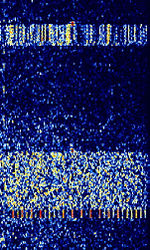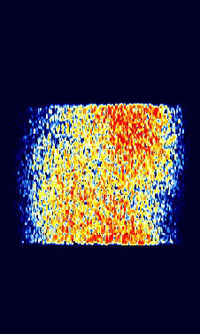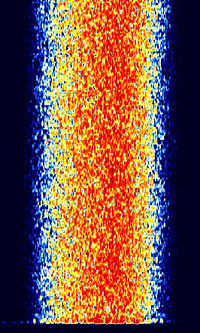Automatic Link Establishment (3G ALE ARCS)
| STANAGNATO Standardization Agreement (STANAG), defines processes, procedures, terms, and conditions for common military or technical procedures or equipment between the member countries of the North Atlantic Treaty Organization (NATO). Modes | |
|---|---|
| HFHigh Frequency (3-30 MHz): STANAG 4285 - STANAG 4529 - STANAG 4481 (CRATT) - STANAG 4197 (ANDVT) - STANAG 4415 - STANAG 4539 (M110B/C) - STANAG 5065 (LFLow Frequency (30-300 kHz)) - STANAG 5511 (Link-11) - STANAG 4538 (3G ALEAutomatic Link Establishment) - STANAG-5066 (XMPP) VHFVery High Frequency (30-300 MHz)+: Link-11 (UHF) - STANAG 5522 (Link-22) - STANAG 5516 (Link-16) *Inactive |
2G ALE - 3G ALEAutomatic Link Establishment - ALE-400
3G ALEAutomatic Link Establishment (ARCSAutomatic Radio Control System) is defined by STANAGNATO Standardization Agreement (STANAG), defines processes, procedures, terms, and conditions for common military or technical procedures or equipment between the member countries of the North Atlantic Treaty Organization (NATO). 4538 and MIL-STD-188-141B Appendix C, is only found in tactical ALEAutomatic Link Establishment systems. The two standards are almost identical protocols, except that MIL 188-141B excludes FLSU (Fast Link Set Up) mode and represent the application of serial tone modem 8 PSKPhase-Shift Keying burst waveforms where backward compatibility with 2G ALEAutomatic Link Establishment 8-ary FSKFrequency-Shift Keying is also supported.
Description[edit]
3G ALEAutomatic Link Establishment defines the concept of an Automatic Radio Control System (ARCSAutomatic Radio Control System) for HFHigh Frequency (3-30 MHz) communication links supporting an Internet Protocol (IPInternet protocol) interface for tactical communications. The ARCSAutomatic Radio Control System concept consists of three main functions: Automatic Channel Selection (ACS), Automatic Link Establishment (ALEAutomatic Link Establishment) and Automatic Link Maintenance (ALM). An ARCSAutomatic Radio Control System system is typically implemented as an embedded system in tactical HFHigh Frequency (3-30 MHz) radios.
An ARCSAutomatic Radio Control System 3G ALEAutomatic Link Establishment or Synchronous ALEAutomatic Link Establishment (async call might be used if the called (or the caller) station may not have achieved net synchronisation, where 2G FSKFrequency-Shift Keying ALEAutomatic Link Establishment is always Asynchronous ALEAutomatic Link Establishment) is an system designed to establish quickly and efficiently one-to-one and one-to-many (broadcast and multicast) tactical links. It supports trunked-mode operation (separate calling and traffic channels) as well as sharing any subset of the frequency pool between calling and traffic. It uses a specialized carrier-sense-multiple-access (CSMA) scheme for calling channel access control, and regularly monitors traffic channels to avoid interference.
STANAGNATO Standardization Agreement (STANAG), defines processes, procedures, terms, and conditions for common military or technical procedures or equipment between the member countries of the North Atlantic Treaty Organization (NATO). 4538 and MIL-STD-188-141B Appendix C are located at the data link protocol layer and the link setup layer of the OSI model. The data link protocol is closely connected with the burst waveforms defined in the standard, and cannot be run with other waveforms. On the other hand, the link set up, which is also located at layer two, can be run in conjunction with other data link protocols, for example STANAGNATO Standardization Agreement (STANAG), defines processes, procedures, terms, and conditions for common military or technical procedures or equipment between the member countries of the North Atlantic Treaty Organization (NATO). 5066 with all supported waveforms. In this case, ARCSAutomatic Radio Control System establishes a line-switched connection which STANAGNATO Standardization Agreement (STANAG), defines processes, procedures, terms, and conditions for common military or technical procedures or equipment between the member countries of the North Atlantic Treaty Organization (NATO). 5066 or the waveforms make use of.
3G ALEAutomatic Link Establishment is based on efficient ARQAutomatic Repeat reQuestAutomatic Repeat Query data link protocols using six robust Burst Waveforms (BW’s) known as BW0-BW5 which are optimized for the data link protocols. All burst waveforms use the basic 8-PSK8-Phase Phase-Shift Keying (3 bits per symbol) modulation at 2400 baudBaud (unit symbol Bd) is the unit for symbol rate or modulation rate in symbols per second. centered at 1800hz also used in the MIL-STD 188-110A serial tone modem waveform. The 2G advanced 8-ary FSKFrequency-Shift Keying Alternate Quick Call (AQC) ALEAutomatic Link Establishment also uses the BW2 PSKPhase-Shift Keying waveform for its optional burst mode operation. These properties of 3G ALEAutomatic Link Establishment provide for an Automatic Link Management (ALM) system and are heavily used in support of both STANAGNATO Standardization Agreement (STANAG), defines processes, procedures, terms, and conditions for common military or technical procedures or equipment between the member countries of the North Atlantic Treaty Organization (NATO). 5066 networks and Tactical Chat point-to-point communications.
The STANAGNATO Standardization Agreement (STANAG), defines processes, procedures, terms, and conditions for common military or technical procedures or equipment between the member countries of the North Atlantic Treaty Organization (NATO). 4538 data link protocol is an ARQAutomatic Repeat reQuestAutomatic Repeat Query protocol which can only be run in a point-to-point data packet connection. The difference in robustness between HDL and LDL as detailed later herein, is the result of the different waveforms which are used. The data link protocol is closely associated with the burst waveforms defined in the standard. There are six Burst Waveforms (BW) defined which are used in different aspects of the protocol. HDL is used for large messages and/or good channel conditions whereas LDL is used for short messages and/or poor channel conditions.
Characteristics[edit]
The six waveforms have different characteristics in terms of data rate, interleaving, frame pattern and synchronization which provides for different degrees of robustness and application. The ACK signals use the most robust waveforms along with link being more robust than the traffic waveforms, which means it may be impossible to pass the payload after a link if channel conditions are poor enough.
The burst waveforms employ code combining for data transmissions: complete channel coding is computed for each data block before transmission, but only a subset (one half or one quarter) of the code bits are sent in each transmission. If a packet is received with uncorrectable errors, the soft decisions are saved and additional code bits are requested in a retransmission of the packet. After each new reception, the additional received signal is combined in the FECForward Error Correction decoder with the earlier reception(s) until an error-free result is obtained. Since the retransmission of additional code bits is requested on a packet-by-packet basis, the code rate (and therefore the effective data rate) of each packet is reduced from the initial high rate only so far as is necessary for correct reception. Thus, with no more overhead than is already required for ARQAutomatic Repeat reQuestAutomatic Repeat Query operation, data rate can adapt as required for each individual packet in a message.
In 3G ALEAutomatic Link Establishment all stations in the network are equipped with accurate clocks (referenced to GPS and other time servers) and perform synchronous scanning of a set of pre-assigned frequencies based on their clocks. All stations change frequency simultaneously, and the current dwell channel of every station is always known, enabling very rapid linking where there are no need for ALEAutomatic Link Establishment Soundings due to the synchronous scanning, however the protocol and packet format are defined in STANAGNATO Standardization Agreement (STANAG), defines processes, procedures, terms, and conditions for common military or technical procedures or equipment between the member countries of the North Atlantic Treaty Organization (NATO). 4538 for use when Link Quality Assessment (LQA) would be useful. For example, when in scanning mode, 3G ALEAutomatic Link Establishment stations shall also be able to detect 2G ALEAutomatic Link Establishment calls from MIL-STD-188-141A based systems and respond.
One of the functions of the sub network layer is translation of upper-layer addresses (e.g., IPInternet protocol addresses) into whatever peculiar addressing scheme the local subnet uses. The addresses used in 3G ALEAutomatic Link Establishment protocol data units (PDUs) are 11-bit binary numbers. In a network operating in synchronous mode, these addresses are partitioned into a 5-bit dwell group number and a 6-bit member number within that dwell group. Up to 32 dwell groups of up to 60 members each are supported (1920 stations per net). Four additional unassignable addresses in each group (1111xx) are available for temporary use by stations calling into the network. When it is desired to be able to reach all network members with a single call, and traffic on the network is expected to be light, up to 60 network member stations may be assigned to the same dwell group. However, this arrangement does not take full advantage of the 3G calling channel congestion avoidance techniques. To support heavier call volume than the single group scheme will support, the network members should be distributed into multiple dwell groups. This results in spreading simultaneous calls more evenly over the available frequencies.
FLSU: To establish the link to another station the system uses the STANAGNATO Standardization Agreement (STANAG), defines processes, procedures, terms, and conditions for common military or technical procedures or equipment between the member countries of the North Atlantic Treaty Organization (NATO). 4538 mentioned BW5 (Burst Waveform 5). The Transmit Level Control (TLC) sequence gives the transmitter and the receiver opportunity to find a steady state before the preamble sequence is received. This includes for instance frequency compensation and gain control. After the TLC sequence follows the preamble sequence which gives the receiver opportunity to detect the presence of the waveform. The preamble used in the BW5 is unique for this waveform. Thereafter follows the data sequence, a 50-bit data package that contains source and destination addresses. It also includes a couple of other parameters essential for the link setup. The burst waveform is modulated using an 8-ary PSKPhase-Shift Keying serial tone modulation with a carrier of 1800 HzHertz (Hz), unit of frequency, defined as one cycle per second (1 Hz). and a symbol rate of 2400 symbols/second. The modulated TLC, preamble and data sequence each consists of 256, 576 and 1600 = 2432 PSKPhase-Shift Keying symbols (PDUs). This will give the duration of total 1.013 seconds transmission time. This is sufficiently small to fit into the channel dwell time of 1.35 seconds.
Although 3G ALEAutomatic Link Establishment is more reliable and has significantly enhanced channel-time efficiency, the existence of a large installed base of 2G ALE radio systems and the wide availability of moderately priced (often military surplus) equipment, has made 2G the baseline standard for global interoperability.[1]
Features[edit]
Improvements over 2G ALE:
- Faster link establishment
- Linking at lower SNR
- Improved channel efficiency
- ALEAutomatic Link Establishment and data traffic use the same family of waveforms
- Higher throughput for short and long data messages
- Better support for Internet protocols and application
New features in 3G ALEAutomatic Link Establishment:
- Burst PSKPhase-Shift Keying waveforms
- Synchronous scanning of calling channels
- Partitioning of stations into dwell groups
- Multi-slot channel access using call priorities
- Carrier sense multiple access with collision avoidance (CSMA/CA) channel access procedure
Waveforms[edit]
This mode employs 6 constituent burst waveforms BW0 to BW5 for the various kinds of signaling required in the system, so as to meet their distinctive requirements as to payload, duration, time synchronization, and acquisition and demodulation performance in the presence of noise, fading, and multi-path. All of the burst waveforms use the basic 8-ary PSKPhase-Shift Keying serial tone modulation of an 1800 HzHertz (Hz), unit of frequency, defined as one cycle per second (1 Hz). carrier at 2400 BdBaud (unit symbol Bd) is the unit for symbol rate or modulation rate in symbols per second. (the same modulation is used in MIL-188-110A serial mode) in conjunction with Transmit Level Control (TLC) sequence to give the transmitter and the receiver the opportunity to find a steady state before the preamble sequence is received (TLC 106.667 msmilliseconds (.001 of a second)).
| Waveform | Description | Burst Duration | Preamble | Payload |
|---|---|---|---|---|
| BW0 | Used for Robust Link Set Up. 3G-ALEAutomatic Link Establishment PDUs (Protocol Data Unit) | 613.333 msmilliseconds (.001 of a second) | 160.0 msmilliseconds (.001 of a second) | 26 bits |
| BW1 | Used for management traffic and HDL ACK (High-rate Data Link Protocol) acknowledgement PDUs | 1.30667 Sec | 240.0 msmilliseconds (.001 of a second) | 48 bits |
| BW2 | Used for HDL traffic data PDUs | 640 msmilliseconds (.001 of a second) + n*400 msmilliseconds (.001 of a second) n = 3, 6, 12, or 24 |
26.67 msmilliseconds (.001 of a second) | 1881*n bits n = 3, 6, 12, or 24 |
| BW3 | Used for LDL traffic (Low-rate Data Link Protocol) traffic data PDUs | 373.33 mS + n*13.33 msmilliseconds (.001 of a second) n = 64, 128, 256, or 512 |
266.67 msmilliseconds (.001 of a second) | 8*n + 25 bits n = 64, 128, 256, or 512 |
| BW4 | Used for LDL ACK (acknowledgement) PDUs | 640.0 msmilliseconds (.001 of a second) | None | |
| BW5 | Used for Fast Link Set Up (Note: Does not existing in 141B) | 1013.33 msmilliseconds (.001 of a second) | 240 msmilliseconds (.001 of a second) | 50 bits |
Samples[edit]
| BW2 | BW3 | BW4 |
|---|---|---|
Additional Samples[edit]
- 3G ALEAutomatic Link Establishment with STANAG 4539
Decoding Software[edit]
- Hobby Level Software
- Currently no hobby level software can copy this mode
- Professional Level Software
- go2DECODE
- go2MONITOR
- Hoka Code300-32 under Option 'M'
- Krypto500
- Wavecom W-Code
- Wavecom W-Spectra
- MS-DMT
- Rapid Mobile STANAG 4538
Additional Links[edit]
- United States Department of Defense MIL-188-141B
- RadioScanner.RU MIL-STD 188-141B App C
- Analysis of Third-Generation HF ALE Technologies, New Mexico State University
- shoc Database: 3G ALE
- WAVECOM Database: 3G ALE
- Blog I5-56578



